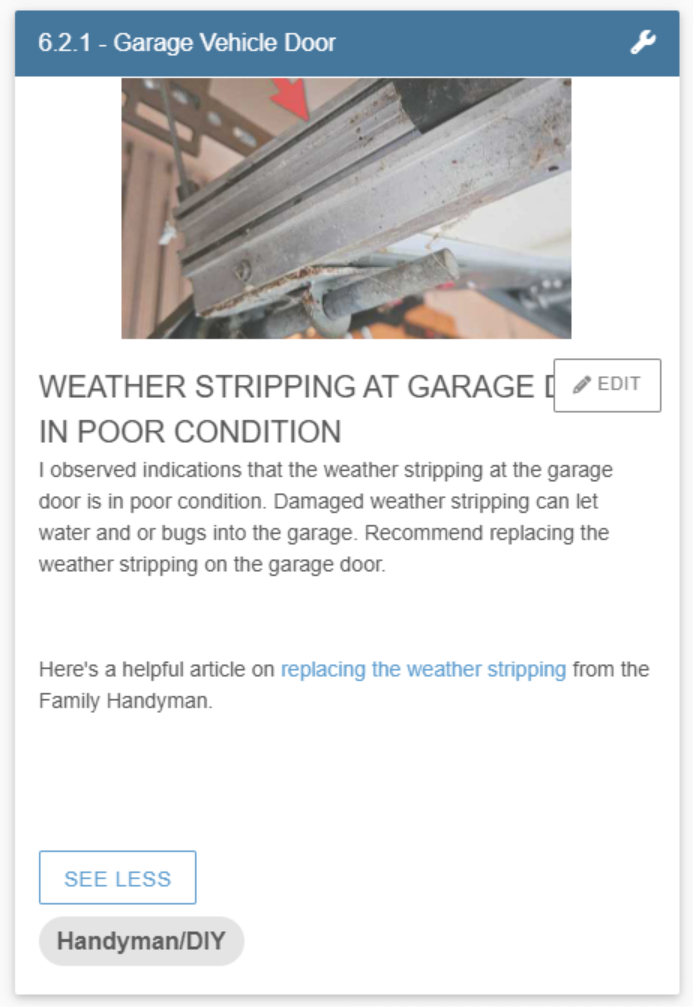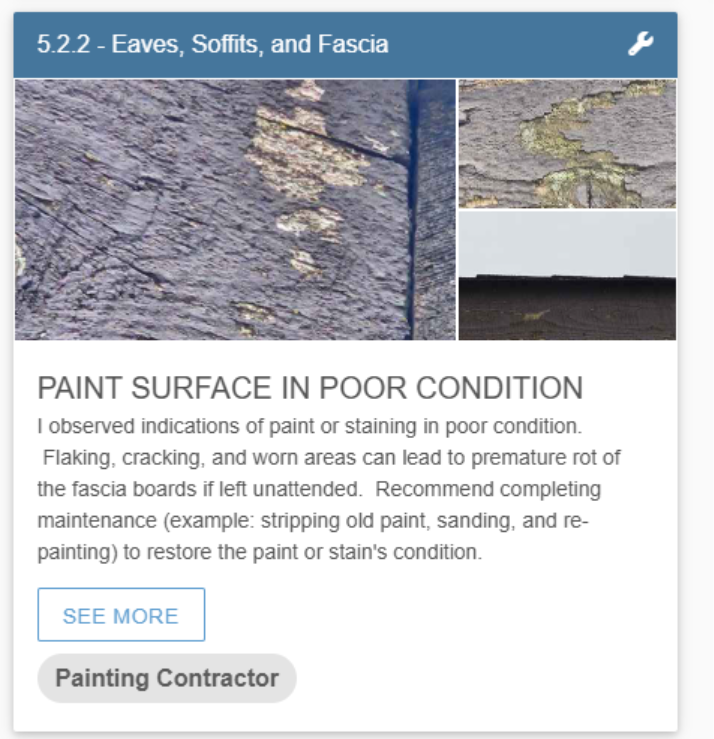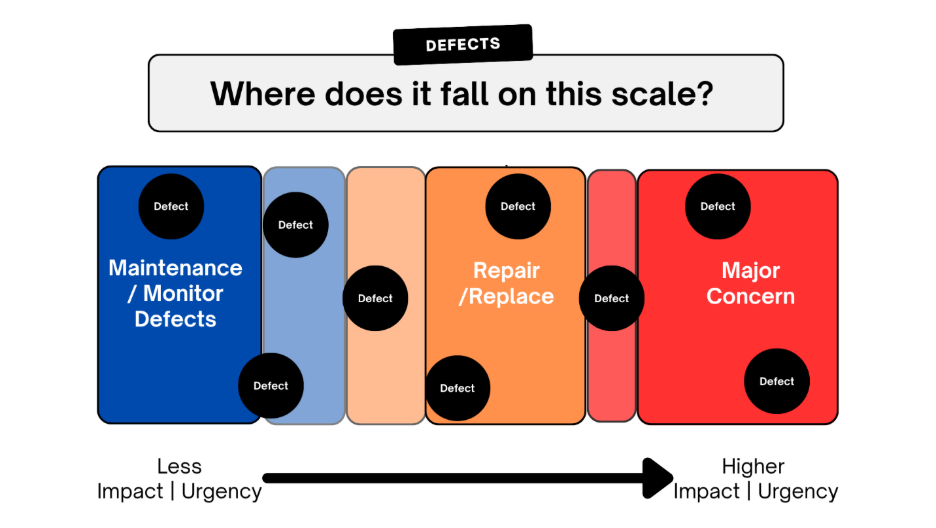Maintenance / Monitor Inspection Report Defect Category:
By: Sean Struckmeyer | Tech Inspect Home Services
This is Part 2 of a series of articles further explaining the inspection report. For this post, we’ll focus on the report categories of Maintenance / Monitor items.
To see more about the report in general, see Part 1 in the series.
Part 3 of the series will focus on Repair/Replacement defects and Part 4 will focus on Major Concerns.
What is a defect?
A defect in a home inspection report is any condition in a system or component of a property that the inspector determines, based on judgement at the time of inspection, significantly impairs occupant safety, shortens or adversely affects the normal life expectancy of the component, or poses a material adverse effect on a home’s value or functionality.
What is a defect category?
A defect category is a way to categorize the defects, partly by severity and partly by immediacy that an item should be addressed.
Think of defect categories as a sliding scale to support interpretation of the report. If we label everything simply as a defect or an issue, that doesn’t help to highlight the problem, the priority or the severity. But even defects within the same category are not all equal, therefore, context, reading the report in its entirety and asking your inspector follow-up questions is vitally important to the overall understanding and gaining as much value as possible.
What is a maintenance defect?
Simply put, these are maintenance defects. Things that require upkeep. But they are not causing an immediate malfunction or degradation of a system or component.
- Maintenance Items are color-coded in Blue.
- Minor items needing attention, like clogged gutters. Typically, lower effort and cost to fix, but not a guarantee, they won’t take significant time or resources to fix.
- Should be addressed before they escalate to a defect, which could incur higher repair costs and effort to repair or cause additional issues.
- Monitor Items – need to be watched and inspected regularly by the homeowner for degradation or issues. These may not require maintenance today but will in the future.
Here’s a great example of what we mean. The following card is pulled from a report, showing a maintenance defect at the garage door weather stripping. What makes this a maintenance defect? 1st, the weather stripping is damaged, as evidenced by the picture and should be replaced to prevent water from seeping into the garage and help keep bugs and mice out of the garage. 2nd, it does not have an effect on the primary function of the garage door, going up and down. 3rd, this does not have an adverse impact on the value of the home.
In this example, the weather stripping should be replaced for the above-mentioned reasons, and this is a straightforward job, that a little research and a quick trip to home depot could solve. In fact, we’ve even provided a link to a handyman article on how to do this, right in the report.

What if the inspection report has LOTS of maintenance defects?
First, take a deep breath, all homes require maintenance over time. Like everything in life, not everything needs to be done at the same time or all at once. Take the information from the report, discuss with your realtor or trusted advisors, discuss with your home inspector to determine what really needs to be done soon, what you should ask to have corrected before closing (if anything) and then begin prioritizing and working through the list of maintenance items as time and budget allows. Don’t forget about them and reference the report over time for a refresher. Yes it may seem daunting if it’s a big list, but this is part of home maintenance and now, with YouTube and the internet, it’s much easier to figure out how to fix something and take care of things yourself.
How do I prioritize fixing maintenance defects?
At Tech Inspect, our guidance is to fix anything that can allow water to intrude into the home’s structure or has to do with managing water. These need to be fixed first. Like caulking around a window or door or cleaning out the gutters. Water is the thing we need to manage, so that it doesn’t lead to larger issues.
Second item to address would be anything that could lead to pre-mature failure. An example would be wood rot, or wood that needs to be re-painted, like fascia boards, window/door trim etc. before it begins to rot. If its protective barrier has aged and needs maintenance, you can extend its life, simply with a fresh coat of paint.
So in the two maintenance examples in this blog post we have
- Garage Door Weatherstripping
- Peeling paint on fascia boards
I would recommend replacing the weatherstripping on the garage door first, simply because it CAN allow water to infiltrate the garage and it’s a lower level of effort to resolve it.

Conclusion:
We hope this article helps explain the purpose of the categorization of defects within the home inspection reporting software and how to interpret maintenance items.
As always, if you don’t understand something, please consult with your home inspector!
You should always consider the impact and urgency of a defect. Even a maintenance defect could become a major defect, if it is not attended to. Thankfully there’s usually time before it escalates to that level and costs more time/money to resolve.

